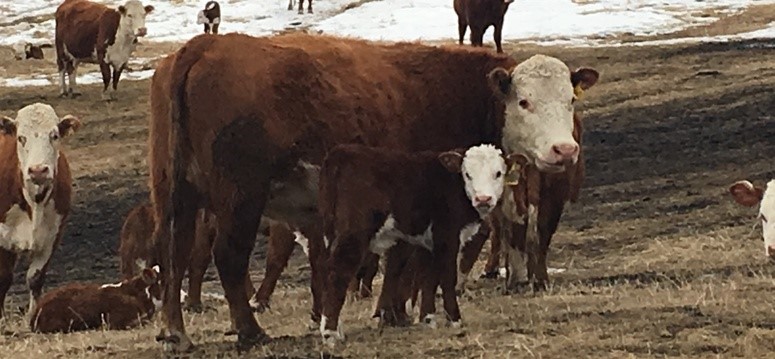Veterinary study aims to reduce calf pain during difficult births
Difficult calvings are a major cause of death in cow/calf herds.
May 2, 2019

Dr. Jennifer Pearson, a veterinarian pursuing doctoral studies at the University of Calgary Faculty of Veterinary Medicine (UCVM), is looking at ways to lessen the pain calves may suffer from a difficult birth as well as ways to help them grow and thrive.
“As a veterinarian, part of my job was to help deliver calves that needed assistance at birth,” Pearson said.
Pearson said her research area has direct implications for beef ranchers, as difficult calvings are a major cause of death in cow/calf herds, according to an announcement from UCVM.
Recently, the Academy of Veterinary Consultants recognized Pearson for her research with the Douglas A. Armstrong Memorial Scholarship.
According to UCVM, Pearson became interested in newborn calf research from her experiences seeing calves suffer severe muscle trauma or oxygen deprivation following a difficult birth.
“Most commonly, the problem is either a calf is too large to fit through the birth canal, or it comes out the wrong way,” Pearson explained. “Large calves can experience trauma having to squeeze their way out.”
Cattle producers are trying to limit some of these factors by breeding accordingly, for instance, by selecting bulls that will have the genetic potential to produce smaller calves, she said, “but genetics alone can’t solve everything. Just like with all types of animals giving birth, things can often go wrong.”
Pearson is studying the clinical impacts of an assisted or difficult calving on calf health. She has looked into pain management and mitigation strategies that will decrease the effect of the difficult birth on calves. Having the opportunity to get to know local producers and hear their concerns has helped her design future clinical research projects, UCVM said.
Benchmark studies underway
“We also have several benchmarking studies in progress to see what producers are doing,” Pearson said. “For instance, when do ranchers decide to intervene in assisting a calving, how often are cows being checked for signs of calving, what resuscitation techniques are being used after delivering compromised calves and what colostrum management practices are performed?”
When a calf is deprived of oxygen during birth, it may be weak and have trouble standing and suckling. In cattle, nutrients and antibodies are transferred to calves through colostrum, Pearson noted.
“It’s extremely important to make sure neonatal calves get this colostrum, because it’s how they develop their immunity. It’s crucial, because the ones that don’t are at a higher risk of disease and death in the preweaning period,” Pearson said.
Source: University of Calgary, which is solely responsible for the information provided and is wholly owned by the source. Informa Business Media and all its subsidiaries are not responsible for any of the content contained in this information asset.
You May Also Like



